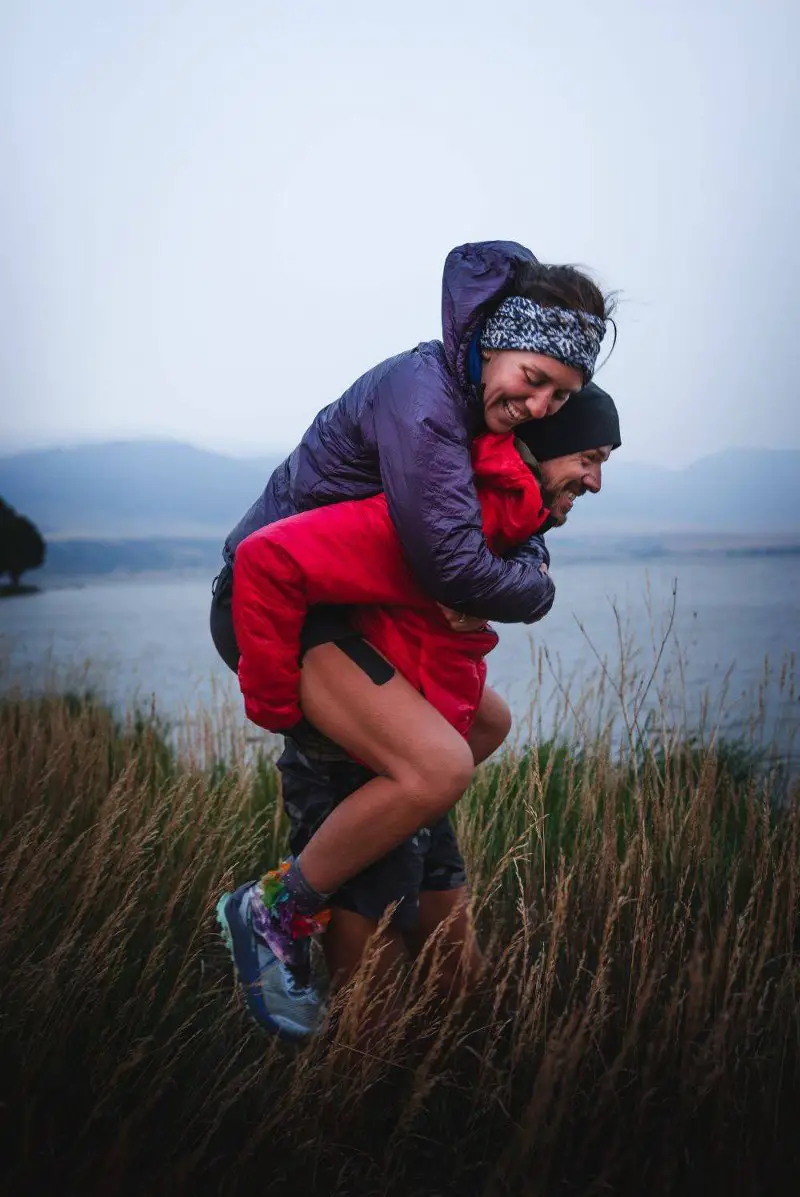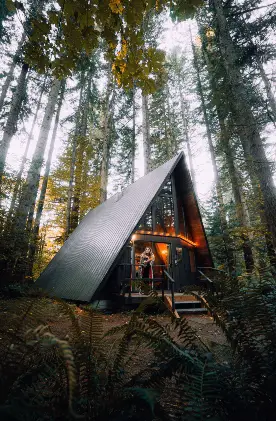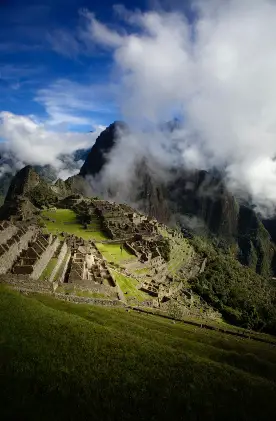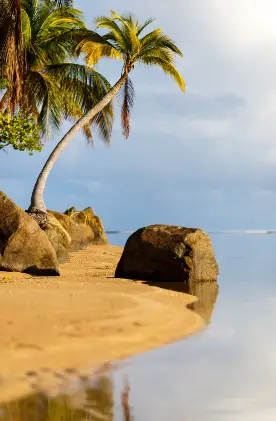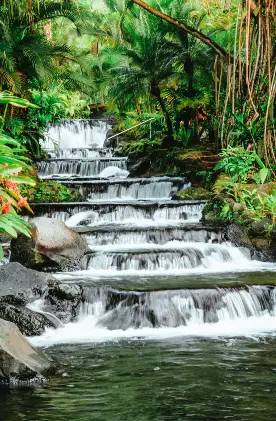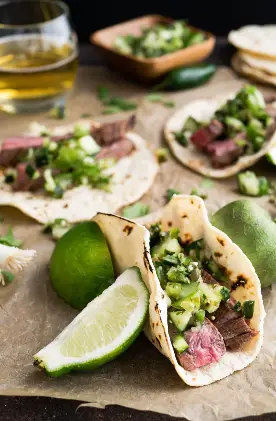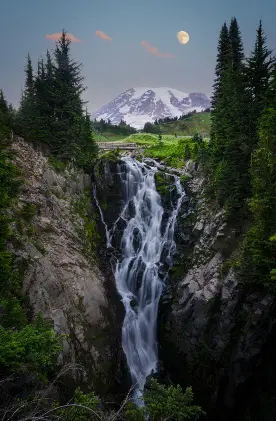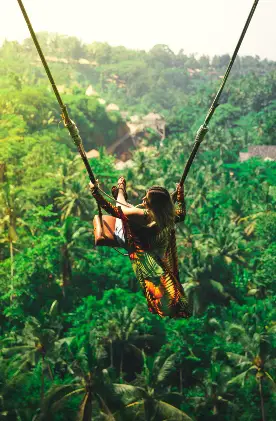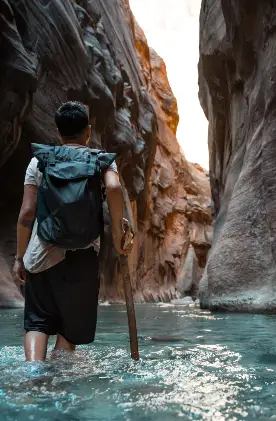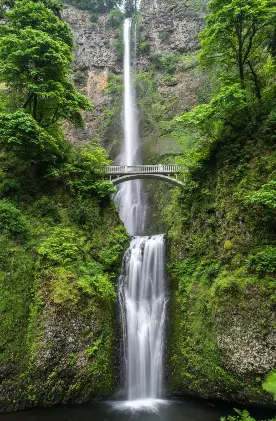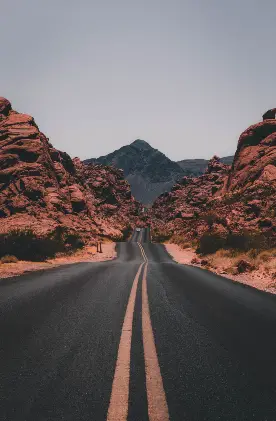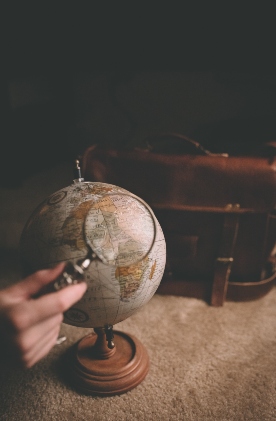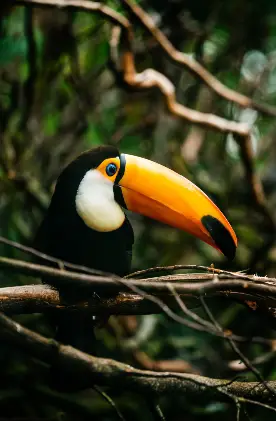I’m not sure I know where to start in the retelling of the greatest, most brutally beautiful life-changing journey I’ve ever taken, but I’ll give it a go. Here is my story on hiking the incredible Continental Divide Trail.
Unlike many of the seasoned hikers I would meet and travel alongside, I had zero personal experience with any aspect of thru-hiking before I set foot on the Continental Divide Trail (CDT). I didn’t grow up hiking, backpacking or spending any real time in the ‘outdoors’ as I know it now.
I was born in England, raised in the Middle East (the UAE), and although I’m now aware of how much that part of the world has to offer an adventure seeker – traversing that landscape wasn’t even close to being on my radar as a kid. I went on my first hike in Los Angeles, where I now live.
It was a 3 mile out and back trail in the city. I’ve never been even remotely athletic – I once tackled myself in a game of football. I fully collapsed on the floor like Bridget Jones after my very first (and last) spin class.
So when I discovered that ‘walking’ was an activity I could do competently and call exercise, I thought ‘sign me up’. But the trails I picked were short, over populated, and other than the occasional broken sweat because of the Los Angeles heat, they were far from challenging hikes.
I first heard about thru-hiking from my (now) partner on the night we met – he had hiked the Pacific Crest Trail (PCT) back in 2018. We sat sipping our tequila, flirting away, and I thought he was totally bonkers as he recounted his experiences to me at the bar. I bloody loved it though!
I wasn’t familiar with the book (or film) Wild, and had no idea who Cheryl Strayed was (I’m not sure how I missed the hype) but the fact that people hiked those kinds of long distances was absolutely mind blowing to me.
I was inspired by my new boyfriend’s strength and courage, and by all of the other brilliant and tenacious humans I was now learning about who were also attempting to journey the length of the US. This was a thing. A real thing that people did. But I could never do that. I wasn’t strong enough or physically fit enough. There was no way. Then Covid hit. I lost my job.
My relationship was struggling. I lived alone and saw next to no-one as I, like the rest of the world, struggled through lockdown. I felt more trapped within the 4 walls of my apartment than ever before, and my lack of structure and purpose on a day to day basis was almost too much to bear.
So I started hiking. Just day hikes, but properly this time. Not the city footpath trails, but I started finding trails further away with less people. I took myself to the Angeles National Forest and to the Santa Monica Mountains – anywhere I could go to get moving and get some fresh air.
Sometimes I went alone, and sometimes for some much needed socially distanced time with my best friend. I’ve always been a very competitive person with myself, and so as the mileage and elevation gains grew on my chosen trails for the day, so did my desire and need to push myself.
It wasn’t long before I set myself a challenge – 30 trails in 30 days. It opened up a new world of hiking to me, and suddenly I was seeing the expansive possibility of trails to be taken. When I completed it, I felt strong. I felt accomplished. It was a feeling I became addicted to, though I maybe didn’t realise it at the time. One of those 30 trails was a section of the PCT.
I remember standing at Windy Gap, completely alone and full of some newfound confidence, and out of nowhere I announced to myself, and to the trail, “I’m going to hike you one day. All of you”. I don’t know where it came from but the seed to attempt a thru-hike had been planted. It was a scary seed – arguably ridiculous because I had never backpacked in my life.
About a month later, as my birthday approached in late October, my normal ‘let’s go out and get drunk’ request was not an option because of lockdown. But it also didn’t appeal to me. Instead, I wanted more than anything for my best friend and I to attempt a backpacking trip. My first. Two seemingly unprepared ladies going out into the wild and giving it a go.
Our miles were short (19 miles over 3 days). Our packs were comically large. Our bodies were hurting. But when we finished, I felt that beautiful familiar feeling of accomplishment rushing through my body.
The addiction was growing. I wanted more. With no sign that my life would return to normal anytime soon, and with zero inkling of my crazy beautiful city opening back up again, my plan to thru-hike ‘one day’ very quickly became ‘sod it, I’m going to thru-hike next year’!
And my initial idea to hike the PCT, became ‘well, why not the CDT?’ – My partner had planned on a 2020 CDT hike, and like so many other hopefuls, decided to reschedule to 2021. After much discussion, and a lot of YouTube watching on my part, I/we decided to hike the CDT in 2021 together.
People planned and trained for such a journey for years but I was giving myself 4 months. It was stressful piecing it all together in such a short time frame, but honestly any longer and I may have tried to talk myself out of it. Sometimes you just have to take the plunge and take that first step.
From Start to Finish on the Continental Divide Trail
I’ve never been one to do anything half heartedly. If I was going to attempt this trail, I would do it all the way. So that’s what I did. I hiked Northbound on one continuous footpath, beginning at the Mexican border in New Mexico and ending at Waterton Lake/Canadian border in Montana.
If you were to google it, the Internet will tell you that the entirety of the Continental Divide Trail is 3100 miles. Guthook (the app thru-hikers use to navigate such trails) will tell you it’s 3000. But the special thing about this trail is that it is known for being more of a ‘choose your own adventure’.
Some routes you’re able to pick out of preference of a specific area, or attraction, or mileage. Some of those routes are born out of necessity – as I’m sure any thru-hiker will tell you, you have to be able to adapt and change plans when things like dangerous weather conditions, fire closures or a whole list of other things totally out of your control rear their heads.
And so you choose alternate routes accordingly. No 2 hikers on the Continental Divide Trail will have done the exact same trail (except if you’re hiking with a partner of course) and that is one of the many reasons why this trail is so magical. Being that it was my first trail, and I was in it for the long-haul, I wanted to start slow – definitely slower than most.
One of my greatest fears (other than snakes and grizzlies) was getting an injury that might stop me from finishing. Our first day on trail was short and similar to that of a longer day hike – 11 miles. The next few days were closer to 15. We stayed in the 15-20 mile a day region for a little while to allow our bodies to get stronger, and get used to the weight on our backs.
The pressure to hurry certainly wasn’t there at the beginning, and I was very grateful for it. During this time, we did occasionally set longer days to challenge ourselves or perhaps to be able to get into town earlier. But nothing was born out of a strict itinerary or panic to get to the finish line.
Once we hit Colorado and the San Juans, the big climbs, the hours and hours of post-holing through soft snow, the hail storms and frightening icy mountain traverses (recommended for those only with mountaineering experience – which I did not have) all made our mileage drop significantly.
We had gruelling days where we were hiking for 14 hours and only covered 12-14 miles. It was so disheartening. It was mentally and physically draining. But if there is anything in this life that will teach you a hard and fast lesson in perseverance, it’s a thru-hike. So we kept on going.
By the time we hit our third state (Wyoming), we were feeling stronger. For the first time we were starting to feel the pressure of having to reach the Canadian border before the bad weather hit and before the bridges were pulled in Glacier, which happens on the 15th of September.
Many hikers finish after that date and it is possible. But we weren’t looking to ford icy rivers through cold weather. Not at the end. So we made that our goal. At this point in the trail, we were averaging 25-30 miles a day.
We even had a day in Wyoming’s infamous Great Basin where we set ourselves a 24 hour hiking challenge – to hike as many miles as our bodies could handle in a single day. I managed 45 miles. I never in a million years thought that would be something my mind and body were capable of.
But the Basin was relatively flat terrain, and I had the constant push and support from my loving trail family to reach the goals we set ourselves. I am forever grateful for that and for them. I will never forget that day.
In terms of an itinerary, we would mainly plan for mileage depending on sections – how many miles we had in-between towns and resupply points would determine how many miles we wanted to accomplish each day. Water sources and potential camp spots also played a big role.
Unlike the PCT, water can be very sparse at times and the tent symbols on Guthook were a rarity. I think we maybe camped by a tent symbol on the map twice the entire trail. Instead, we had to look at the elevation and find a somewhat flat area where we could hopefully pitch a tent for the night.
Ideally near water. Though often we dry camped. If we could do a section in less days with bigger mileage, and have a shorter food carry, we would push ourselves. More miles a day meant less weight. I think the longest carry we had between resupplies was 6 days. And when water is sparse, that total added weight to your pack can make a big difference.
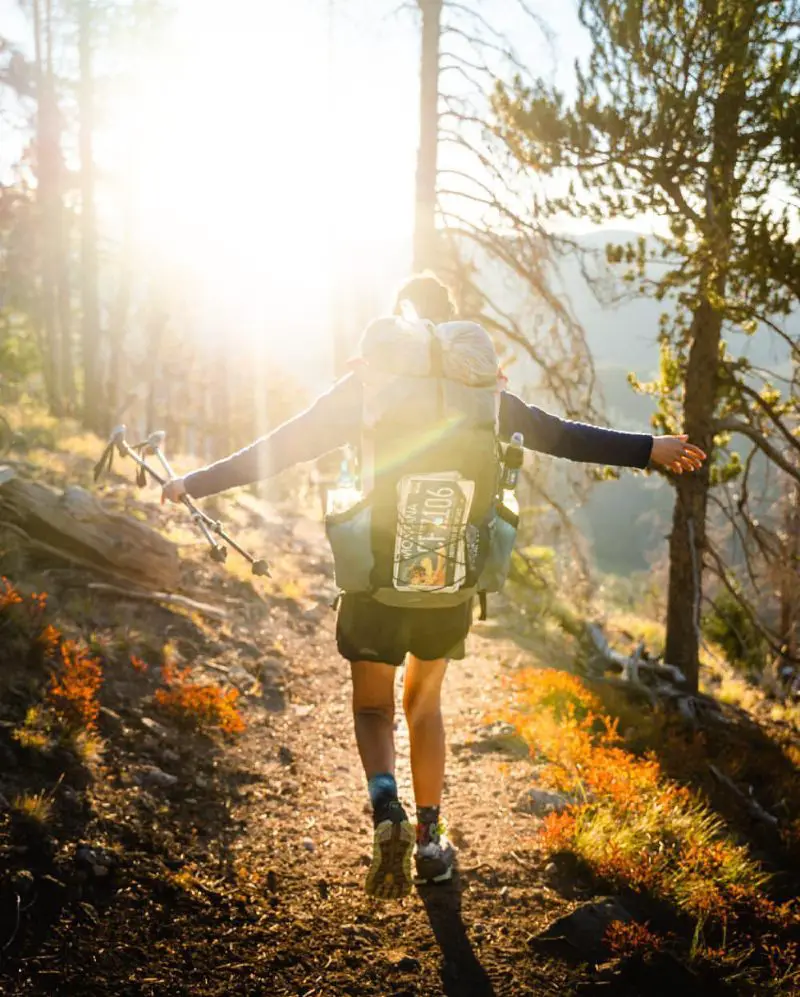
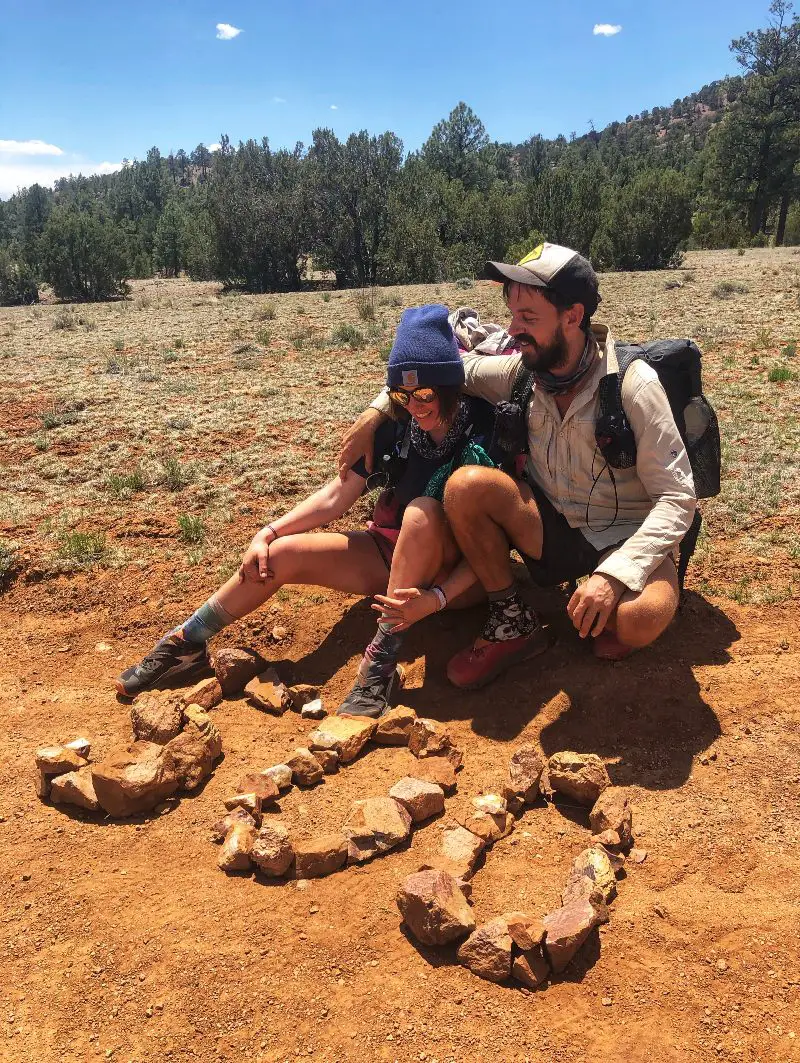

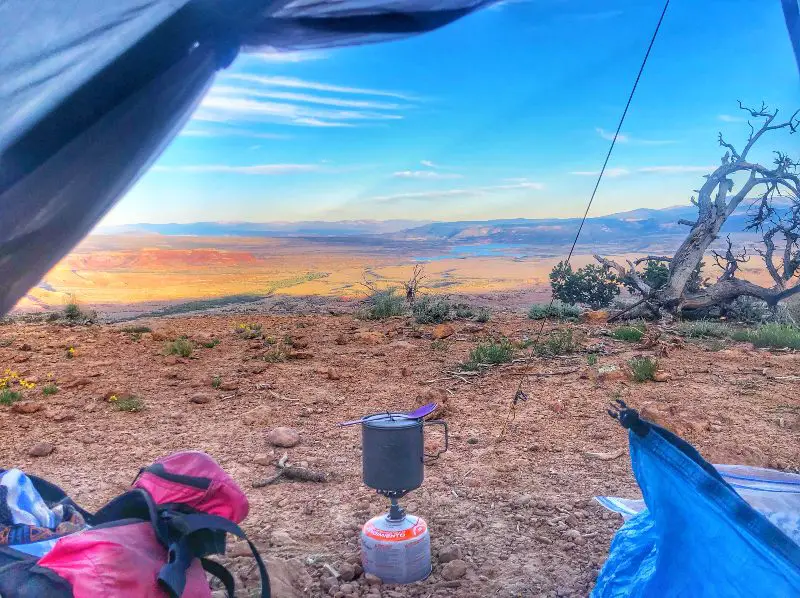
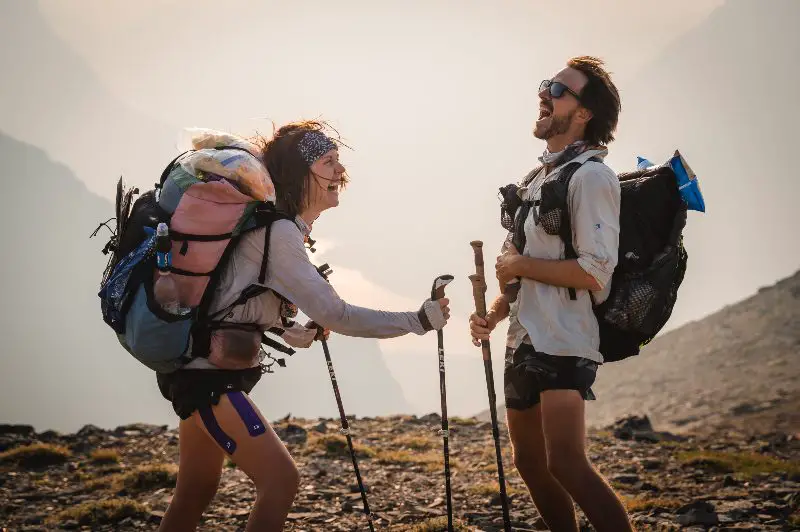
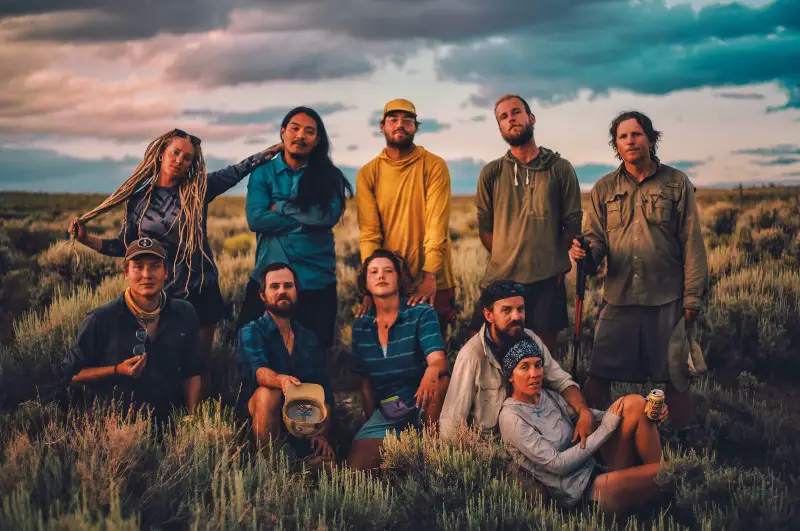
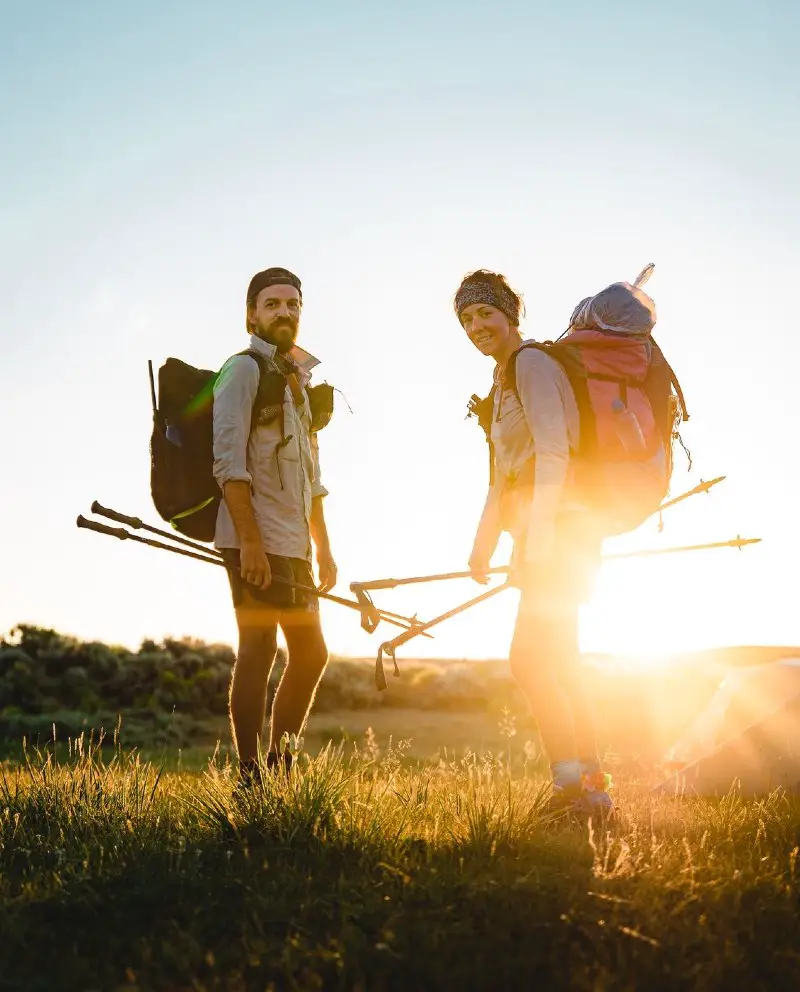


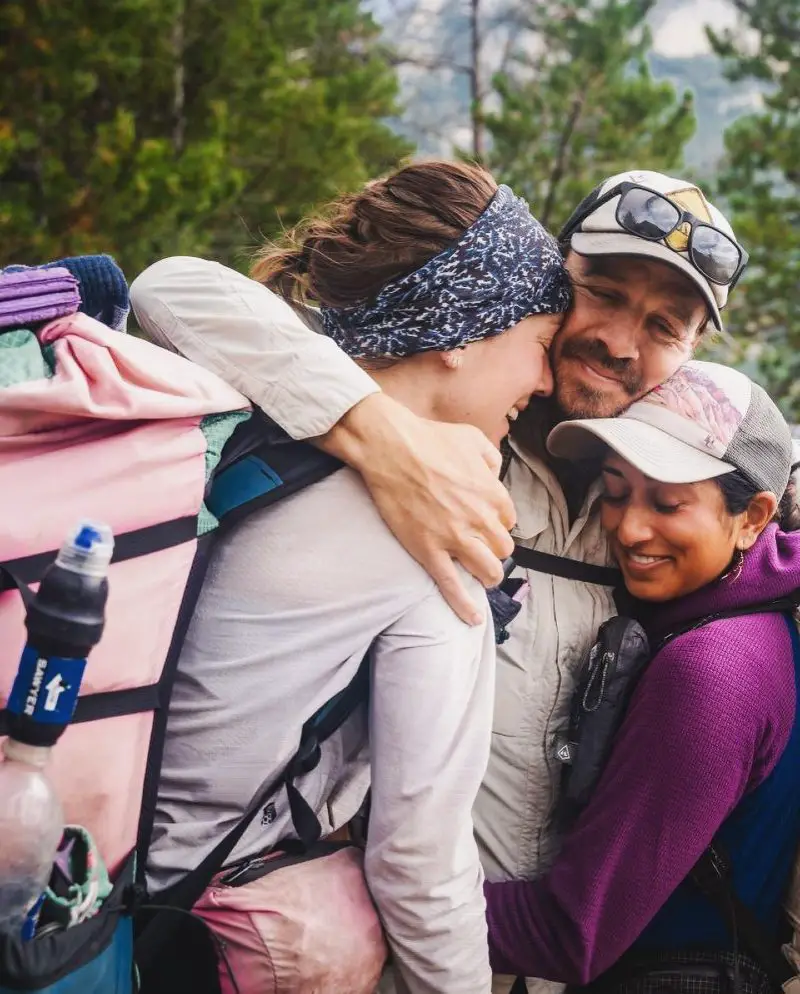
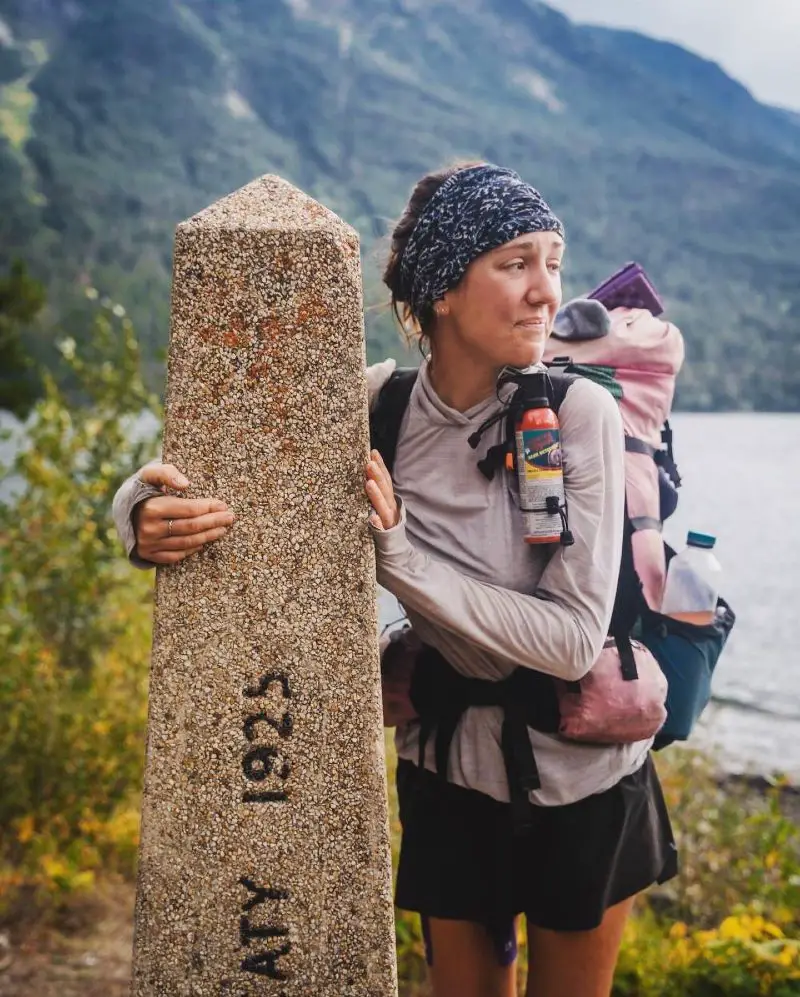
Overnight Stays off Trail – Hostels, Angel’s Homes & Hotels/Motels
There were a few nights where we stayed at hostels or trail angel’s homes. There is a wonderful online community and we found contact info for trail angels on the Continental Divide Trail Facebook page when we needed to.
They were great places to save some money (a thru-hike, this one in particular, can be a very costly endeavour) and to be immersed in the trail community even when off trail. But honestly, the Continental Divide Trail was pretty hard on my body, and come town days and resupply points, I was very much in need of an epsom salt bath and a good night’s sleep.
So a lot of the time we stayed in hotels and motels. Always the cheapest we could find, which unfortunately after New Mexico, was usually over $100 a night. Most towns have options for places you can pitch your tent, whether it’s in the middle of a ball field or in the grounds of a church. So if that was something you wanted to do, there is more often than not an option for it.
But I would say do what’s within your budget and what your body needs at the time. It’s a long hike and if a ‘luxury’ stay for a night or two helps you make it to Canada then do just that. You can always share a room between a few hikers to split the cost – go full hiker trash suite mode!
A Forever Memory on the Continental Divide Trail
I had too many amazing memories on the Continental Divide Trail to count, enough to fill a book (maybe one day). But I have found myself thinking about this particular moment almost daily since getting back to real life, so as it has stayed with me so vividly, it seems like the right one to share.
It was at mile 1130.7 in Colorado, very aptly named ‘Hope Pass’. Up until this day, I had struggled tremendously with climbs. While everyone around me was talking about their ‘trail legs’ and marching up mountains with seemingly little effort, I was slow, out of breath, and disheartened as I watched my partner and friends get further and further away from me.
I was aware of how long they’d have to wait for me at the summit and I felt bad. I felt like I was holding people back. I couldn’t for the life of me understand why it was happening. I’d hiked the same miles as everyone else. I should be stronger by this point?! I should be able to keep up.
We sat at lunch before the climb and I told Paddles & Tumbleweed (my partner & best mate on trail) that I was feeling anxiety about the upcoming Hope Pass. I kept looking at the elevation on Guthook and couldn’t see any way I was going to make it up there. It was steep, very steep.
2532 ft in 2.3 miles. Tumbleweed said something to me that I don’t think I will ever forget: “It’s only 2.3 miles. It’s going to suck for those 2.3 miles, but then you’ll be done! And it won’t suck. You’ll have done it and it will be incredible. You can do anything for a mile and then just do it again”.
I shook my head as I packed up and started towards the base of the climb to get somewhat of a head start. They’d catch up and pass me in no time. Before I knew it, I was climbing. I looked back but there was no sign of the others. Although I was sweating, and my legs were jelly, I was managing to keep a steady pace with Tumbleweed’s words echoing through my head.
I checked Guthook – I had done a mile?! How had that happened?! It was only going to suck for another 1.3 miles. I could do that. I could do anything for a mile. I already had. My mindset changed at that moment. I was no longer thinking of how much further I had to go, I was thinking of how far I’d already come. And that spurred me on more than anything.
I chugged some water and heard my partner behind me – “You’re a machine! How are you doing this?”. “I don’t know, I’m dying”, I said. “No you’re not, keep going baby! You’re doing it!”, my partner replied. I let out animalistic grunts and continuously coaxed myself out loud to keep going.
I checked Guthook again – 0.8 miles left…0.5…0.3…I could see the top. I turned around and saw Paddles getting closer. “I can’t let you pass me now, this close to the top” I said. He laughed, “Not a chance. It’s yours. Take it”. I reached the summit to cheering from another couple already at the top.
Paddles was behind me cheering too. I turned round to him, bending down on one knee and, like some chivalrous knight of olde, he presented me with his trekking poles – passing me the ‘baton’ of the CDT. In that moment, he’d seen a tangible shift in me, and he was proud. I was too. I’d walked 1100 miles to get there but those 2 miles were the most meaningful.
They changed the way I approached the challenging parts of the trail to come, and changed the way I spoke to myself when I was struggling. Up until Hope Pass, I had my doubts about finishing, but at that moment I knew I was making it to Canada. Even if it was going to suck for a little bit. I could do anything for a mile. And it would be incredible!
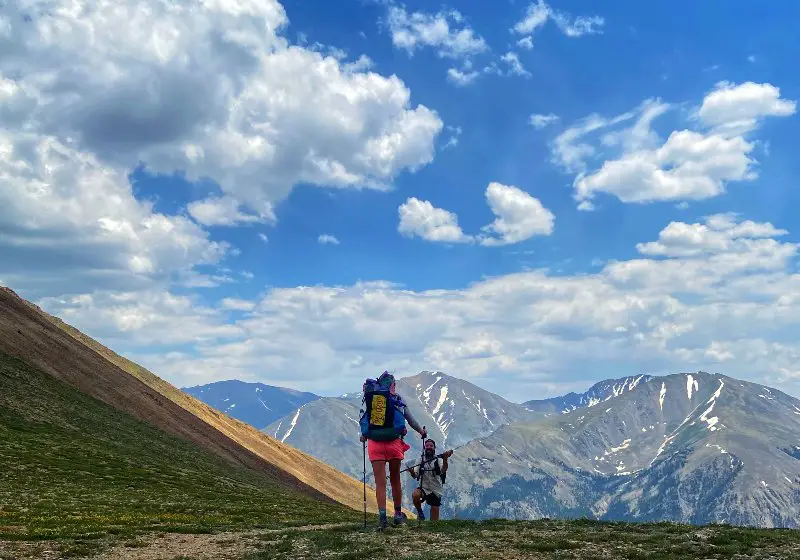
Training for a Thru-Hike and What to Know Before Getting on Trail
I’m not sure there is anything that can ever fully prepare someone for a thru-hike. Every day is different, as is every section. But I would 100% recommend getting some sort of training in before starting a long trail.
Doing smaller weekend trips are great, to test out gear and feel comfortable with your whole set-up. It will be all you’ll have to survive for 5 months, so you want to make sure it’s exactly what you need. No more, no less. But sometimes weekend trips aren’t always an option – they take time away from work, your family, your pets, etc. They cost money as well.
And when you’re about to set off on a pretty lengthy and costly adventure, understandably that might not be ideal. I did do one smaller weekend trip with my partner on the CRHT in Joshua Tree – 38 miles over 3 days.
I made some minor gear switches as a result. But other than that, my training consisted of regular day hikes. For a couple of months leading up to our start date, we would hike trails between 5-8 miles, and fill our packs with a couple of gallons of water and some clothes to mimic the weight we would be carrying on our Continental Divide Trail thru-hike.
We picked trails with good elevation gain, and would do these regularly. I think the best way to train for a hike is to hike. And adding some weight into the mix helps. It might seem obvious but your feet are precious!
I started to panic as my start date for the Continental Divide Trail approached because I hadn’t found the right footwear. I tried so many different styles and brands of trail runners. I got blisters, had arch pain and even got achilles tendonitis. It wasn’t good. But I ended up with a foot set up that I genuinely think was gold, and hiked nearly 3000 miles with next to no foot issues whatsoever.
No real pain (other than the expected tiredness) and only 2 blisters at the very beginning, which I’m putting down to the 100 plus river crossings in the Gila. I wore the Altra Olympus 4 trail runners – I ended up having to go up by two shoe sizes, and learned how to tie my laces slightly differently to allow for room in the toes, while also preventing slipping around the heel.
I switched the Altra insole with a Dr Sholls running insole with a plastic arch support – super affordable and worked like a charm! I wore Injinji liner socks with Darn Tough’s on top. And last but not least, I used an anti-fungal cream every single morning, all over my feet (with extra attention around my toes), as a preventative to any painful skin conditions related to hiking.
A tip I wish I’d had is that of a financial nature – I’d advise to add more to your budget when saving for a CDT thru than you think you will need. As I have only hiked the CDT, I can’t compare the costs to any other trails. But I can tell you that I spent more, much more than I budgeted for.
And my partner, my trail family and many other hikers I spoke to were all dipping into savings and putting expenses on credit cards by the end. Colorado proved to be a very expensive state in terms of accommodation and food, and it was clear that the other states we hiked through were all making up for the loss of business during the pandemic.
Everything was more expensive than anticipated. There are always ways to be thrifty when thru-hiking, but I would advise that whatever your budget is, add a couple of $1000 on to it. You never know when you might need to make new gear purchases – my trekking poles snapped in the San Juans and my sleeping bag wasn’t keeping me warm enough.
Those two gear pieces added up to just under $1000 right there! Or you might need to make an unexpected doctor’s visit – a stomach bug and a serious bout of dehydration added a huge expense to my trip at one point. So it’s always better to be prepared. You don’t want to get so far, only to have to get off trail because of lack of funds. It happens.
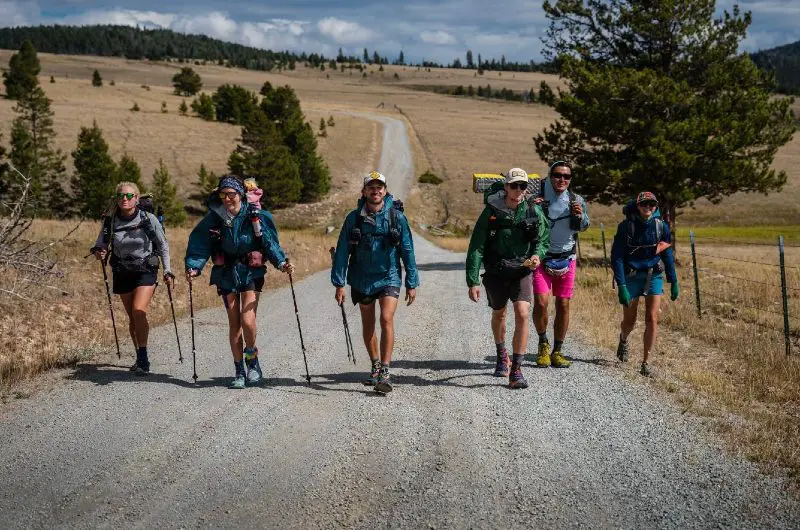
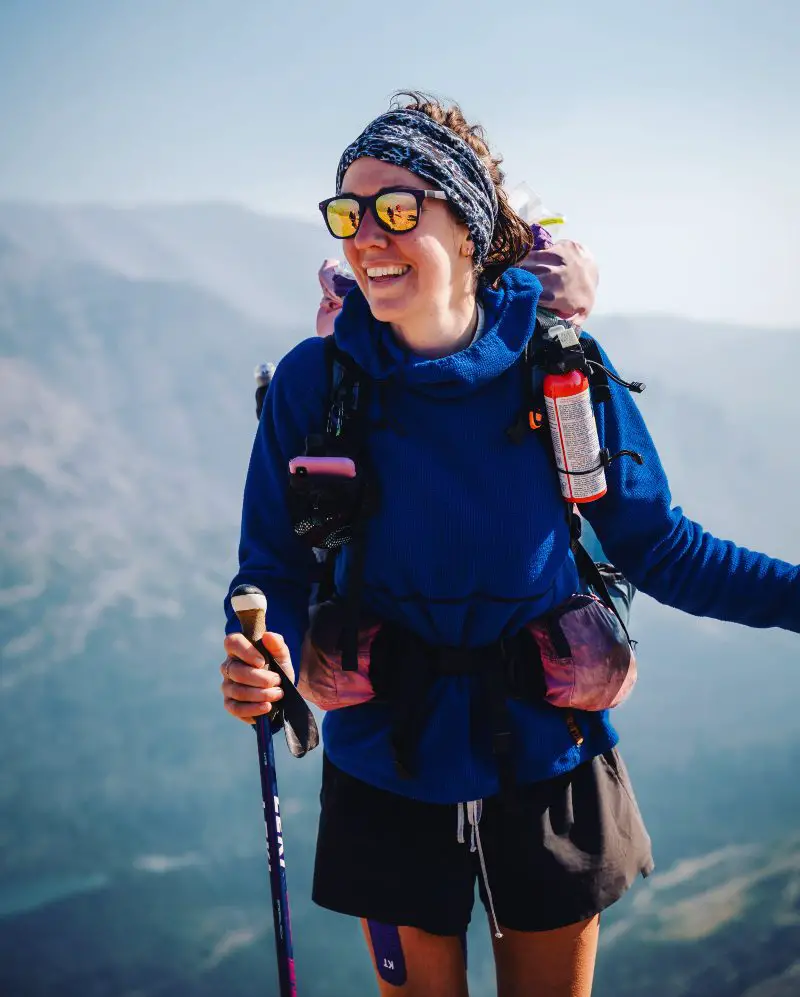
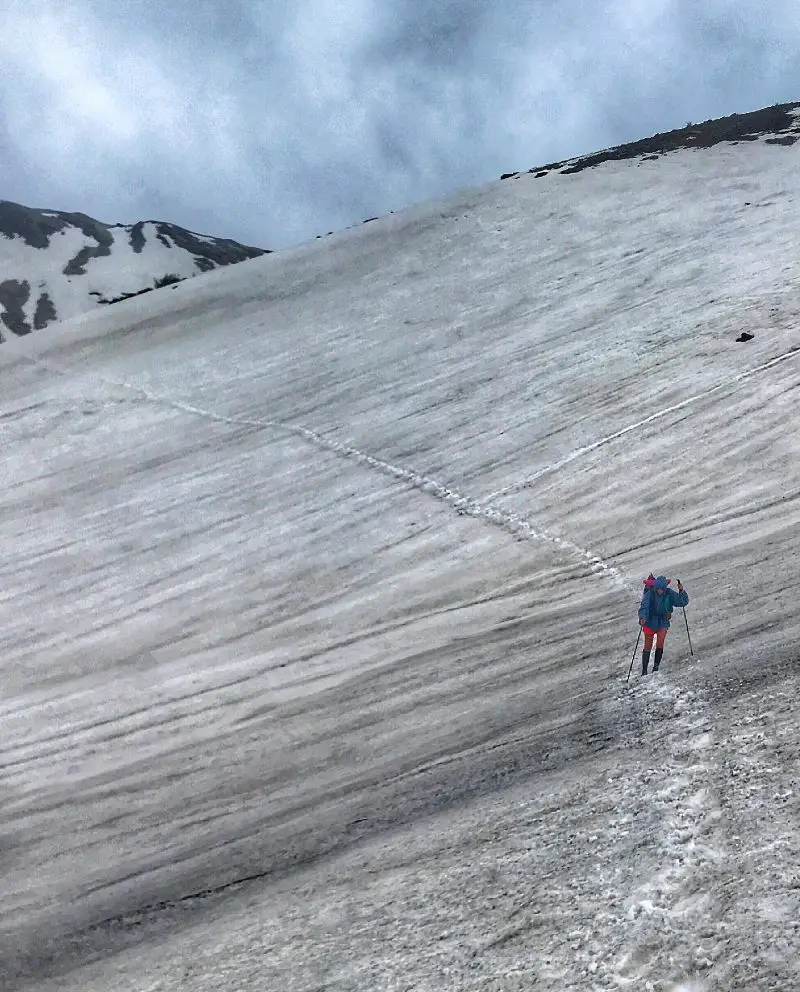
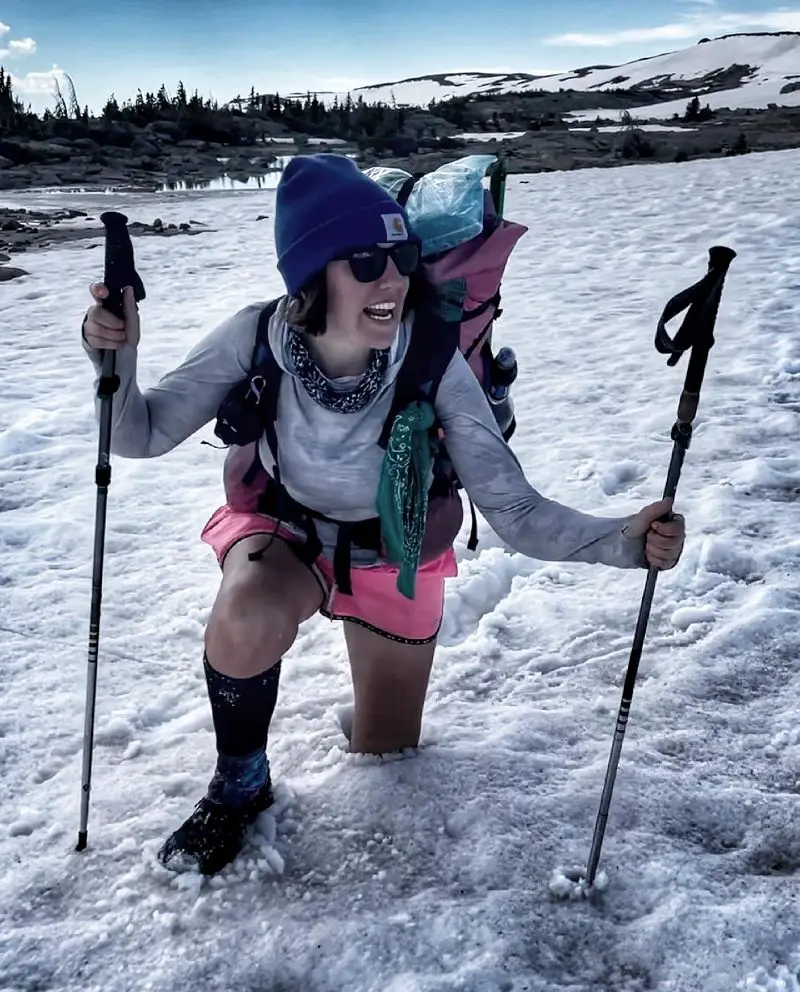
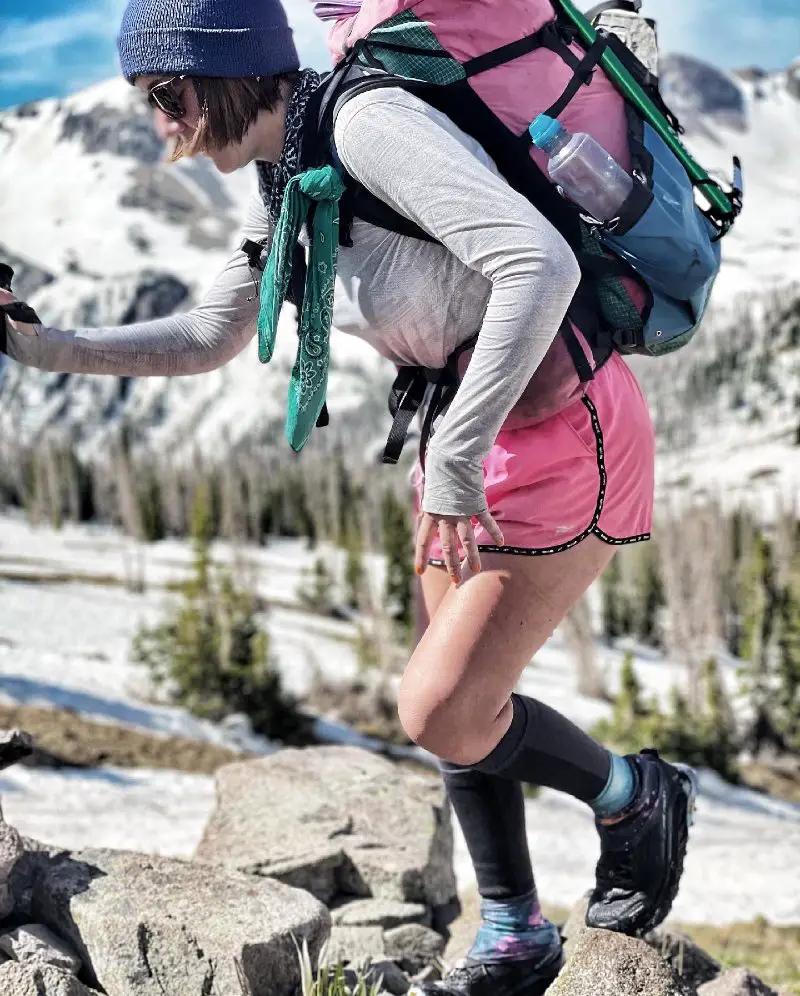
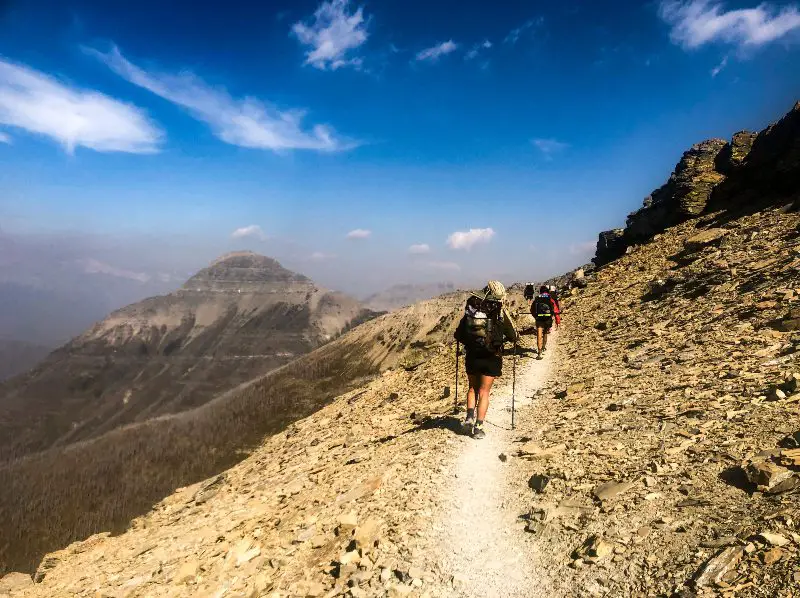
Best Attractions on the Continental Divide Trail
1. Pagosa Springs (CO): A town every hiker will stop at, both to resupply, and to recoup after the exhausting nature of the San Juans. A double zero here consisted of eating ALL the food. There were many delicious options.
The greatest bakery on trail happens to be here – Pagosa Baking Company – the key lime pie alone deserves a Michelin star. The bars and breweries are perfect for some liquid calories before (or after) soaking in a hot spring.
2. The Wind River Range (WY): A hidden treasure that Wyoming locals are desperate to keep a secret and I can absolutely see why. This is an incredibly beautiful place with alpine lakes perfect for a dip at every turn.
Alternates most thru-hikers take are the ‘Cirque of the Towers’ and ‘Knapsack Col’ – one of my regrets on the CDT is not giving myself enough time to soak it all in. Don’t feel the need to rush through this portion, pack more food than you think, take your time and swim in the lakes!
3. The Chinese Wall (MT): Do yourself a favour and don’t google this place. I had never heard of it. It didn’t make an appearance in any of the research I had done beforehand. I didn’t know it existed. There was only mention of it among hikers a couple of days before reaching it – and it absolutely took my breath away! Add this hike to your list.
Final Thoughts on this Incredible Thru-Hike
For any hopeful thru-hikers out there, either of the Continental Divide Trail or any trail, I implore you to go for it. This trail will change you in the most beautiful, irrevocable ways. You’ll be pushed to see what you’re made of on a daily basis, and I promise you, it’s so much more than you think.
- You’ll be met with overwhelming kindness from strangers, who might give you a ride somewhere, or a cup of coffee and a homemade brownie as comfort from the wind and rain, and it will mean the absolute world.
- You’ll see parts of the US you could only ever experience by hiking, and you will see beauty that only a tiny percentage of people get to see.
- You’ll see wildlife that will make you feel like you’ve been let in on a special little secret of the world. And you’ll stop in your tracks to watch them, forgetting how many miles you still have to go that day. During that moment, it won’t matter.
- You’ll meet hikers who you might never have come in contact with in ‘the real world’ who will inspire you, make you laugh and help you through the struggles. Because on trail, it’s a shared struggle. You’re in it together. If you’re lucky, these hikers will become your trail family and friends for life. You’ll be forever grateful that your paths have crossed.
The CDT was a trail that frightened me to tears the night before I took that first step at the Mexican border. But now that I’m home, I miss it all terribly. I have definitely shed a tear or two from the grief of having to say goodbye. I believe that I will go back and hike the Continental Divide again.
It might not be for everybody, but you won’t know until you try. If thru-hiking is something that’s been swirling around in your adventure seeking mind, then the Continental Divide Trail is one of pure magic. It shouldn’t be shy’d away from as a first thru-hike, just because it’s the longest.
Monica, the wonderful mum of the Strawbridge Family (an incredibly inspiring, triple crown thru-hiking family) said to me when she discovered this was my first ever trail: “Oh sweetheart, this trail will ruin you. No other trail will ever compare.” I have a feeling she was right about that!
So, to the trail that certainly provided. To the wildest, most difficult, rewarding path I’ve ever taken. I wasn’t a thru hiker 6 months ago, but I’m a thru hiker now, and my heart is still bursting from this accomplishment that will forever be mine. Thank you CDT for every immeasurable lesson along the way. You’ll stay with me always. Happy trails from Sprout.
